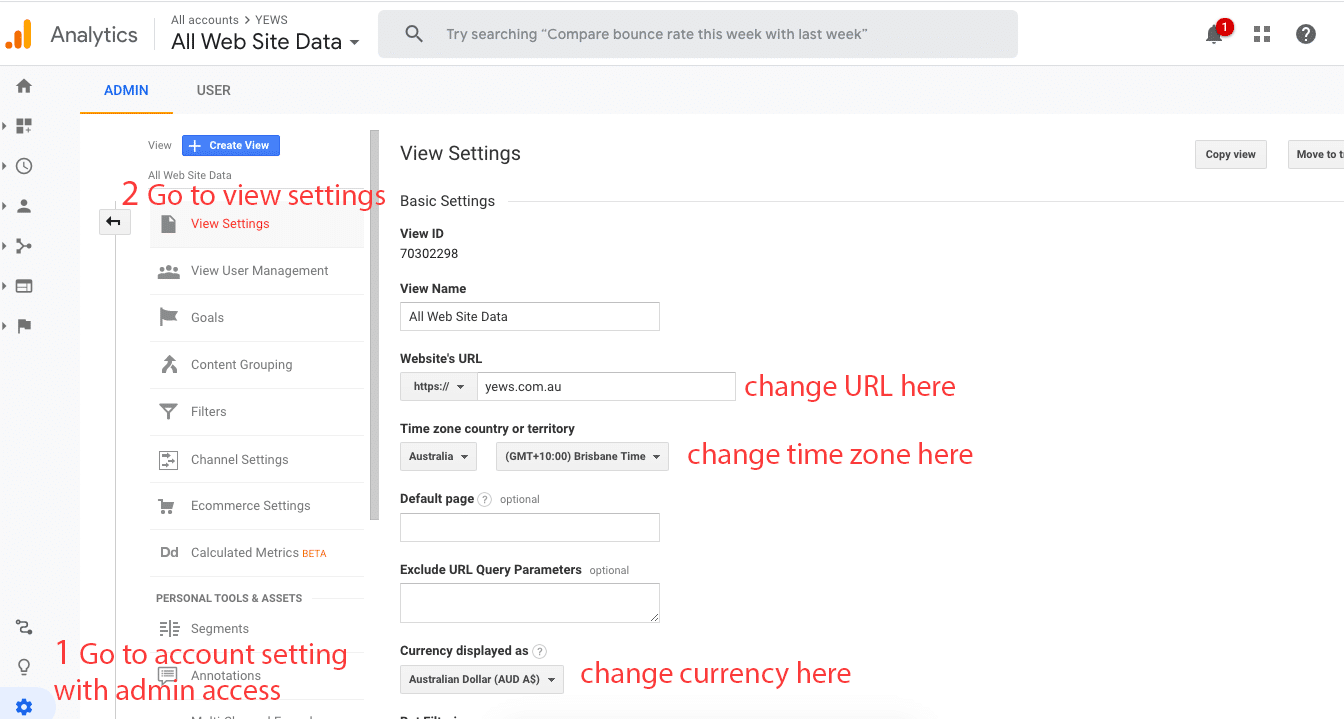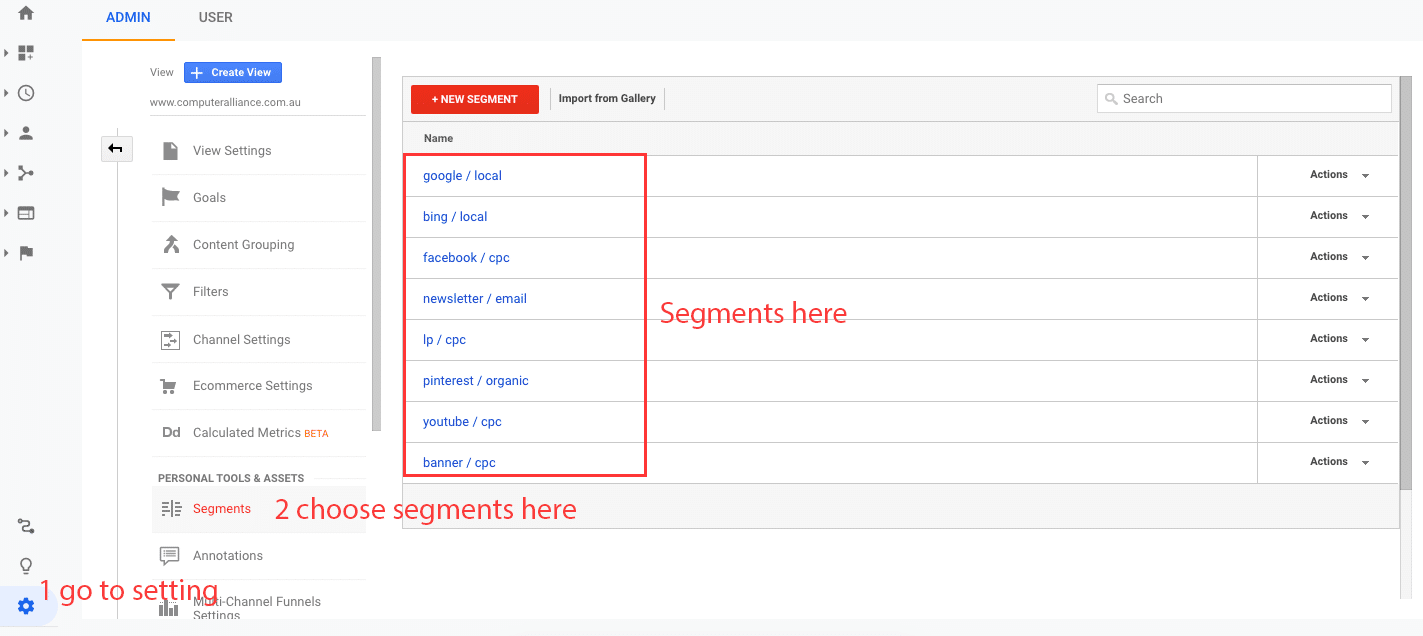Are you trying to understand what the data on your Google Analytics means?
Remember, Google Analytics is made to be customisable. So make sure you’re seeing the data that is most important to your campaign. Start at the start by setting it up correctly.
Here are a few basic hacks to ensure you can make the most of the set up. I will provide more details on each point in the following.
1. Website URL & Time Zone
You would be surprised how many businesses are using the wrong URL, choosing the wrong time zone or selecting the wrong currency when they set up a Google Analytics account. Luckily, you can always jump into account to check and make changes for it. I’ve attached a screenshot below so you can easily find the place to do any adjustments you need.
2. Installing Global Site Tags On your Website
To be able to track your real-time website activities, you will need to install the code to have a clear picture of how your customers interact with your website. It may sound pretty straight forward but you will be surprised how many businesses who miss this opportunity.
We recently had a client think that adding Global Site Tags were entirely automatic. To clear the misconception: you cannot magically import this information from the website to Google Analytic once the account is set up. Expecting Google to collect data without attaching the correct tags is like expecting your household’s bin to be collected without taking it to the kerb.
Google will only collect the data for you if you elect which data needs to be collected – this is what a tag does.
I’ve attached a screenshot below to show where you can find the code in Google Analytics. It’s really best if the tag is added to the website that you’re tracking. Adding the tracking code later can be challenging. If you haven’t yet, I would suggest speaking to your webmaster or to us, and we should be able to help you.
3. The ‘Goals’ Setting
This is the way for you to track conversion on your website. Once you installed the tracking code, you will need to set this up to see if there is/are any conversion(s) happening on your website. You can track a form enquiry or phone call on the website and more by destination, event snippet, and a few more options. For example you might want to know if your customers prefer calling or submitting an enquiry ahead of their initial consult. You can track both and compare using a Goal Setting.
I’ve also attached a screenshot from one of our clients to give you a picture of what it may look like.
4. The ‘Segments’ Setting
It helps to understand where your traffic comes from, such as Google, Facebook or Email Campaigns. Also, is it paid or organic traffic? You can track the customer journey by applying the UTM code to the relevant URLs.
You can easily set up a UTM code on Google URL Builder here and to link with your setting on Google Analytics. If you’re interested in how UTM code works, you can find out more from another blog from us here. I’ve also attached a screenshot to show how it looks.
These are some that I’ve set up. For example I organise the labels by [source]/ i.e. ’google / local’ refers to tracking I set up for a Google My Business Listing because Google is the source and local is the medium.
5. Referral Exclusion List
This is especially important if your website has PayPal, AfterPay or ZipPay options for your customers. It excludes the traffic that customers purchase online through those options on the website and add to the right traffic source to give you a clear picture of where those conversions are coming from in your report. Below is a screenshot to find the referral exclusion list on Google Analytics.
Google Analytics is a great tool to understand a bigger picture of your business, such as consumer behaviour, how your digital marketing campaigns are performing and more.
As the customer journey becomes increasingly complex and multichannel, data is key in understanding what will make your campaign successful.
Therefore, setting up Google Analytics right so you can better understand your customer’s needs, and ensure that your product or service solution can be delivered to them directly.













Leave a Reply